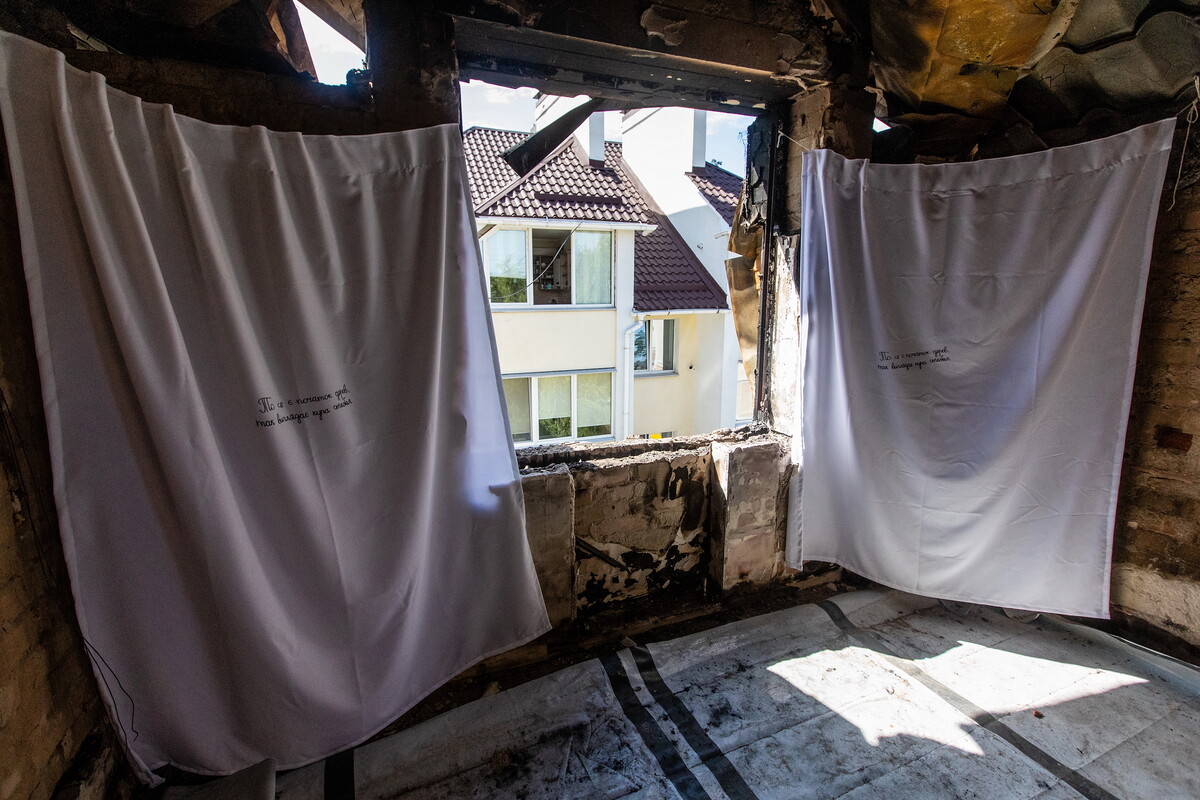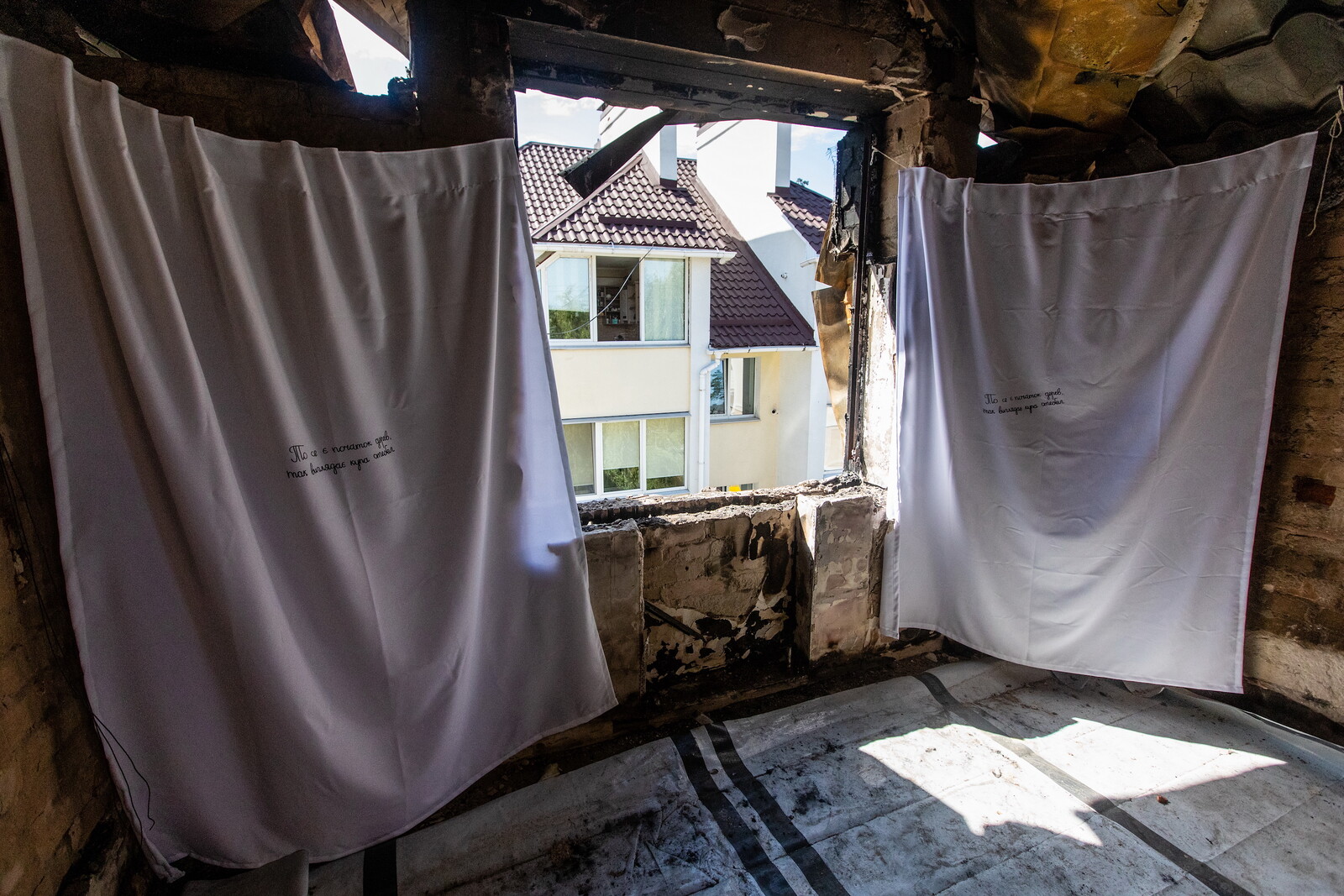Speaking last month to art-agenda about the exhibition she organized in her ruined apartment, the Ukrainian curator Kateryna Iakovlenko explained its focus on everyday gestures of community and resistance as a strategy of studied “indifference” towards those responsible for the destruction of her home and the invasion of her country. Instead of expending her energy on thinking about the aggressor, she told us, she prefers to “think about the future, about ordinary people experiencing all this with me.”
This refusal to acknowledge the presence of an external—in this case hostile—audience might have analogues with other intersections between collective action and creative expression. It was one of the most striking features of the recently concluded Documenta, if not the most commented upon, that so much of the work presented seemed pointedly unconcerned with explaining itself to its viewers. If this sounds like a criticism, then that is perhaps indicative of the degree to which audiences have become accustomed to the idea that even (or especially) creative practices which do not fit easily into established western ideas of what constitutes art should be clearly contextualized and bracketed for their benefit. Instead, the work’s obliviousness to its observers—what might be called its self-absorption—was profoundly invigorating. Here was work made for the benefit of its makers and the people in their immediate surrounds rather than any imagined other, with the burden of interpretation falling squarely on the viewer. Writing in these pages last month, Gregory Sholette contrasted Documenta’s reluctance to make itself easily legible with the polemicism of the Berlin Biennale, which constructed out of its works an argument about the histories of colonial violence that could not be misunderstood by a presumptively white, European audience.
These tensions between the need to communicate a message and the desire to focus on the internal processes of community building, between being seen and reserving a right to privacy, between telling a story and remaining defiantly untranslated, look set to shape the way that art is made and presented in the coming years. They are already apparent in the address of the 58th Carnegie International to the paradox of how a world so closely stitched together by globalized markets, mass communication, and the internet can at the same time be coming apart at the seams. Reviewing that exhibition for us, Noah Simblist proposes that its focus on the historical injustices of American hegemony does not preclude the possibility that it can, at the same time, propose a way forward. In setting its viewers amidst the ruins of imperialism, the exhibition both acknowledges the destruction and attempts to piece together some new form of solidarity from the rubble. It’s hard not to think, again, of Kateryna’s repurposing of her destroyed flat as a space in which to celebrate her community’s future.
That focus on how and to whom these histories are presented, and the broader issue of how we might continue to live amidst the ruins of a damaged planet, runs through this month’s program. A ruin—namely a reproduction of the Venus de Milo—opens a show in Berlin dedicated to queerness and disability, and exploring how these intersecting communities have built what Anne Finger describes as “rich and often joyful cultures in the face of oppression.” In Toronto, Jayne Wilkinson responds to work by Stephanie Comilang and Simon Speiser that imagines how to carry imperiled forms of knowledge into the future; in Riga, a conversation with iLiana Fokianaki, curator of an exhibition which opened in the shadow of Russian aggression, considers the voice as an instrument of resistance (as is now being demonstrated in the protests sweeping Iran). The role of criticism in mediating between artists and their audience cannot, of course, remain outside questions of legibility and authority. But we hope that our coverage might be as various in its engagement with these issues as the works of art on which it reports.
Each month, to accompany the editors’ letter, we publish a photograph from an artist’s place of work. This month we feature an installation shot from the show organized by Kateryna Iakovlenko in the ruins of her Irpin apartment. Titled “Everyone is afraid of the baker, but I am grateful,” the show presented work by Katya Buchatska, Mark Chegodaiev, Sasha Kurmaz, Roman Mykhailov, Anatol Stepanenko, Stas Turina, Tamara Turliun, and Anna Zvyagintseva. To read our interview with Kateryna, click here.


